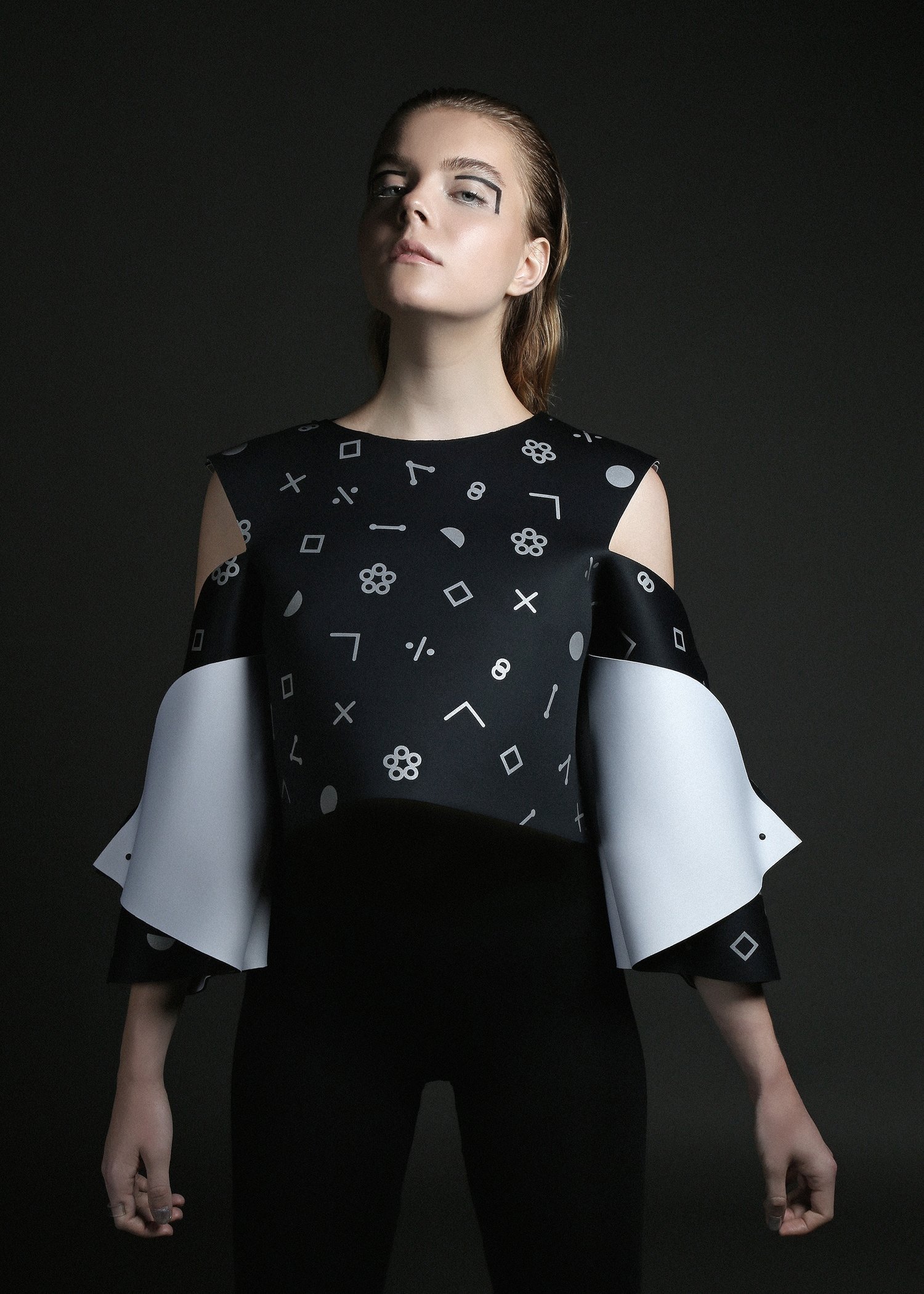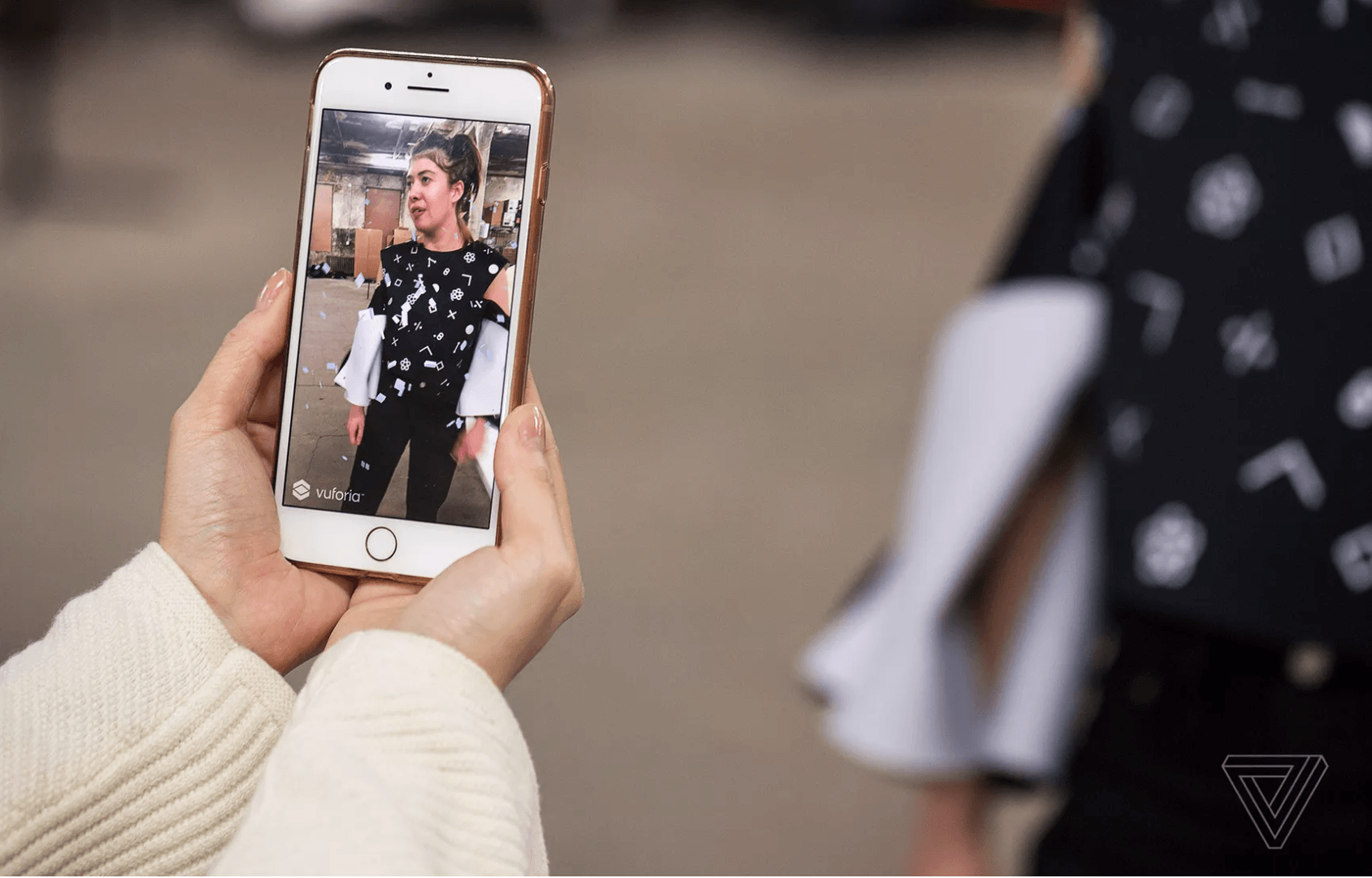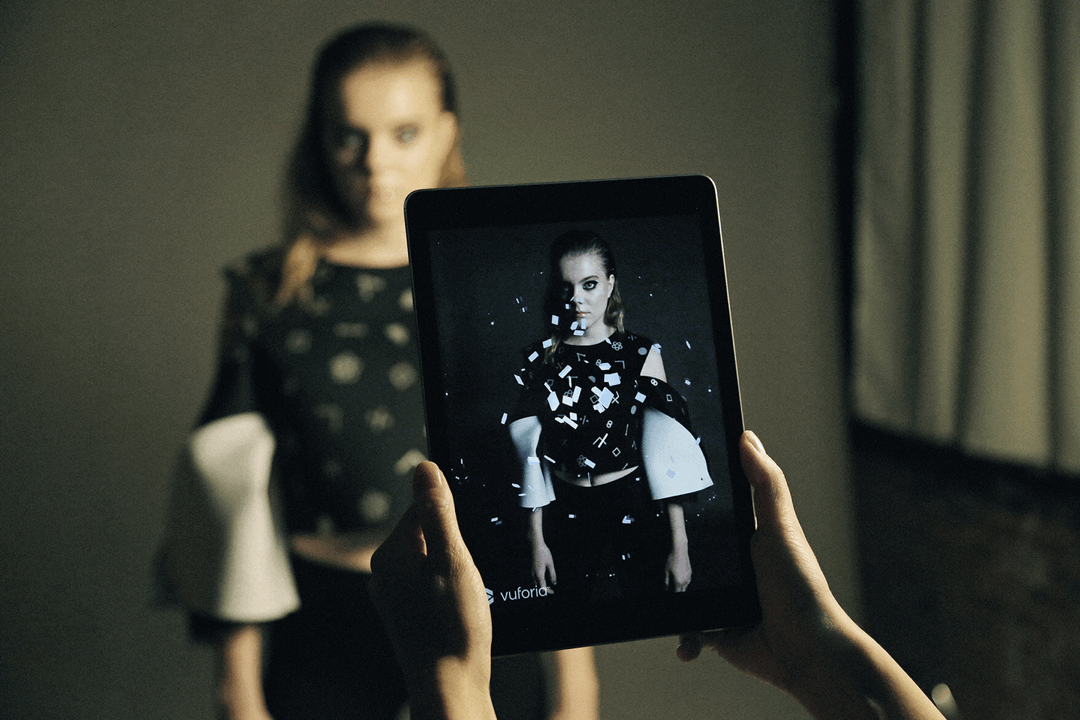
AudRey is a garment piece that analyses its wearer’s Instagram presence and reflects it in a ‘digital aura’ that surrounds the user in augmented reality.
The aura (3D AR particles) emitted from the dress symbolises one’s digital presence, as it uses IoT services to interprets information in the users’ Instagram feed in terms of the colours, comments, and likes.
This combination of augmented reality and fashion explores the potential of wearables in the future where the virtual world and reality meets.


The augmented reality is coded within the patterns on the garment which will reveal itself after scanning the garment with the custom made app made using Unity and Vuforia API. In the app, the patterns will appear to leave the garment and orbit around the user. The garment is made by heat transferring vinyl on neoprene textile, fastened by 3D printed fasteners. 3D textile printing technology.
Pros
- Cool dress that you can wear to dress well with an added ‘twist’
- Allows one to be aware about their social media presence and wear it out like a badge
- Opens up a new layer of fashion and self expression using technology
Cons
- Unaccessible to many if the effect is only restricted to their custom made app
- Patterns all have to be unique in order for personalisation
- User themselves cannot see the effect
- Does it work on mirrors?! (Don’t think so? The patterns will be flipped)
Don’t know if pro or con
- The inclusion of AR using a custom mobile app makes the effect non-intrusive as nobody else but the user (or people with the app) is able to see your data
Alternate uses
This technology is currently being used in museums to make paintings alive. An example will be this Kult’s Emoji Land where a mural is brought to life using AR done by Howie Kim.

Imagine if we are able to do this but with the clothes, instead of having just particles flying around us. It also doesn’t need to be particles that escapes the garment, but moves, or can create the illusion of having the dress cave into one’s body. There will be endless possibilities as to what we can do.
The Future
More customisability will be good to the dress. If one is able to design their own effects, design what they want to show, or to use a database of patterns to reveal itself, that will be really useful to bring such wearable tech to the market.
If everyone had something like the Google Glasses, this will be a cool new way of looking at fashion. It will be even cooler if our clothes don’t have patterns at all and people are still able to see the AR effects by scanning the clothes we are wearing.
I think there’s a need for a default AR program on our phones (or an actual real Google Glasses) as more of such technology emerge. Facebook has already developed an AR program, Spark AR, that allow people to create their own AR filters. The next step is to make viewing AR much more easily.
Links
https://www.wearablemedia.co/audrey
https://www.theverge.com/2018/4/14/17233430/wearable-media-fashion-tech-nyc-ceres-jumpsuit-interactive
https://www.howiekim.com/others


